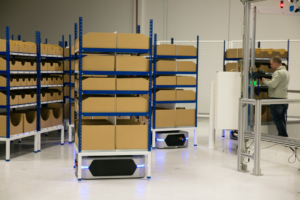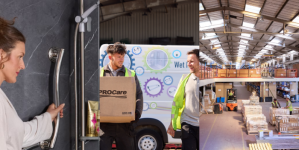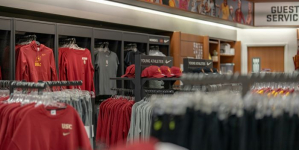-
AI startup Onton raises $7.5M to reinvent the way the world discovers and decides what to buy - November 26, 2025
-
Forklift Market Positions for Recovery as Confidence Expected to Build from 2026 - November 26, 2025
-
PROCare achieves 300% order capacity increase and 99% picking accuracy with Forterro’s ERP solution, Orderwise - November 26, 2025
-
DHL boosts operational efficiency and customer communications with HappyRobot’s AI Agents - November 25, 2025
-
STENA LINE TEAMS UP WITH CAMERA TELEMATICS TO DRIVE SAFETY IMPROVEMENTS AT IRISH SEA PORTS - November 25, 2025
-
Another design award for Toyota’s lithium-ion Traigo_i counterbalanced forklift - November 21, 2025
-
Stuut Technologies Raises $29.5 Million Series A Led by Andreessen Horowitz to Automate Accounts Receivable Work - November 20, 2025
-
INCREASED DIGITAL INVESTMENT REQUIRED TO KEEP PACE WITH 2026 CUSTOMS CHANGES - November 19, 2025
-
FULFILMENT SOLUTIONS FOR SPORTS MERCHANDISE: KEEPING OUR EYE ON THE GAME - November 19, 2025
-
COMPLEX, COSTLY & CONFUSING – THE END OF DE MINIMIS - November 19, 2025
Gwynne Richards Blog: “The challenges faced by warehouses and fulfilment centres and what are the answers?”
This week I was invited to speak to over 80 students at Cardiff Business School on the subject of “The challenges faced by warehouses and fulfilment centres and what are the answers?”
At the beginning of the talk I asked how many students were planning on a career in Warehouse Management and only one person put their hand up! So challenge number one was how to attract more people into the industry – at all levels!
By the end of the talk there were eight hands in the air. People’s perception of warehousing seems to be that they are dark, dingy buildings where companies store things. This may be the case in some warehouses today but many are clean and modern with a great deal of technology and automation!
So onto the other challenges. These included the pressure on warehouse managers to
reduce cost,
facilitate the storage of multiple sku,
manage peaks in order profiles such as Black Friday, Cyber Monday, Singles Day, Christmas and New Year sales
deal with increasingly shorter order lead times.
Other challenges include the fact that we have an ageing workforce in many countries and pressure from consumers to be more environmentally friendly.
So how do we overcome these challenges.
Many of the answers tend to revolve around the introduction of technology and automation.
We are currently seeing a progression from paper picking, through scanning to voice and now onto vision picking. Some companies are combining voice with vision to enhance the picker experience and increase productivity and accuracy.
These are still very much person to goods systems where the operative travels through the warehouse to pick the orders. Zone picking through the use of pick to light systems and batch picking utilizing put to light systems go some way to reduce travel which is still seen as the biggest labour cost factor.
With shorter order lead times and the growth of e-commerce we are now seeing an increase in goods to person systems. The growth in automation is certainly being witnessed in retail warehouses and fulfilment centres.
These automation systems vary significantly and include automated storage and retrieval systems and mini load systems utilizing shuttle technology, Swisslog’s Autostore solution whereby totes are stored one on top of the other and robots transporting shelving to a manned station such as those supplied by EiraTech, Kiva, Swisslog and Grey Orange.
All of these goods to person systems can increase productivity and accuracy, shorten order lead times and reduce labour. i-Herb.com who introduced Bastian Solutions’ i-bot robots into their second warehouse are able to process orders with only 10% of the labour required in their original manual warehouse.
Other companies such as Boston Dynamics are working on humanoid robots to carry out tasks within the warehouse. Although not quite there yet in terms of dexterity and speed compared to us humans it won’t be long.
However, all this comes at a cost. Not only in terms of monetary investment but also, as pointed out by one of the students, what happens to the labour – not all of them will be able to upskill to become technicians and engineers. Another challenge to add to the list!
We also discussed the current thought leaders in logistics – Amazon – and their ideas of floating warehouses – not sea going vessels but airships with the ability to hold stock, process orders with deliver using drones.
I still have my doubts about drone delivery especially where cities have blocks of flats rather than houses and gardens as landing pads and the danger posed to aircraft and pedestrians.
Citizens of countries with a gun culture could see this as a new sport with a prize every time, providing of course that it’s not on its return journey to the warehouse.
http://www.appriseconsulting.co.uk/
































